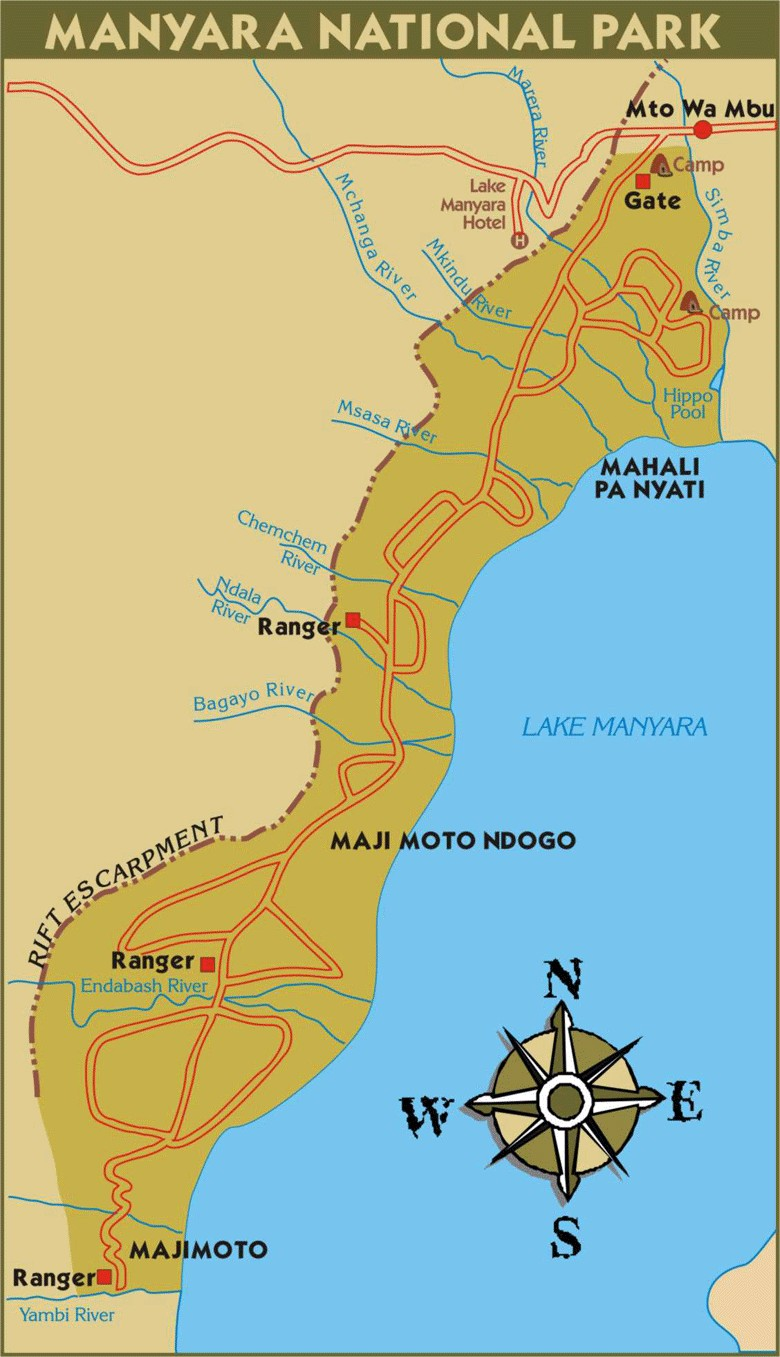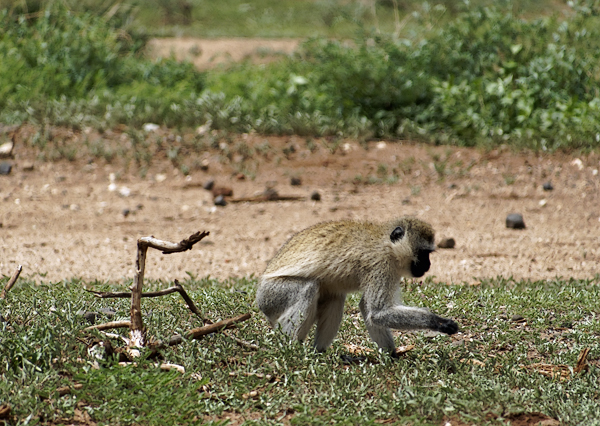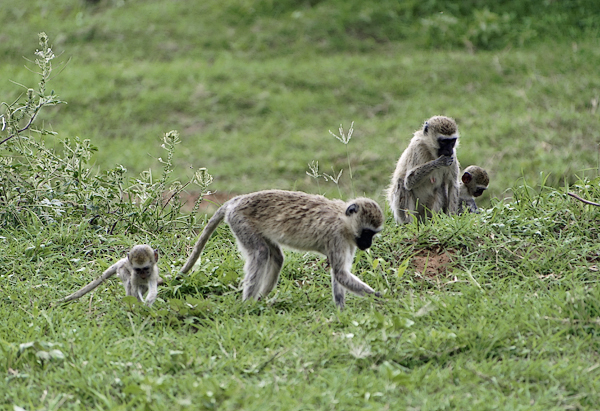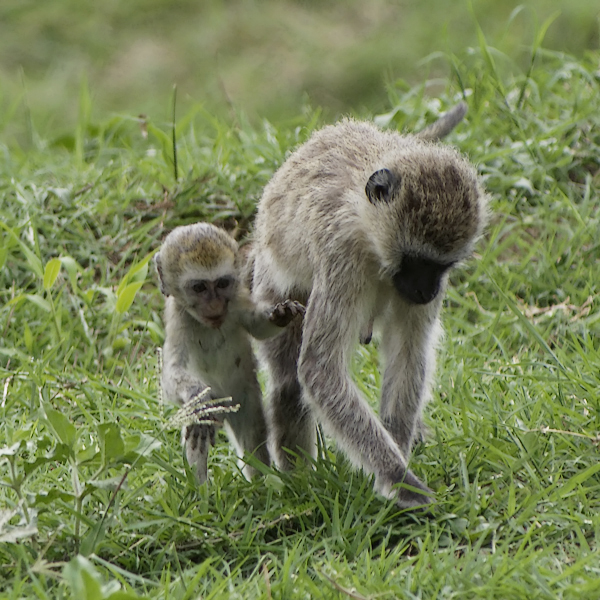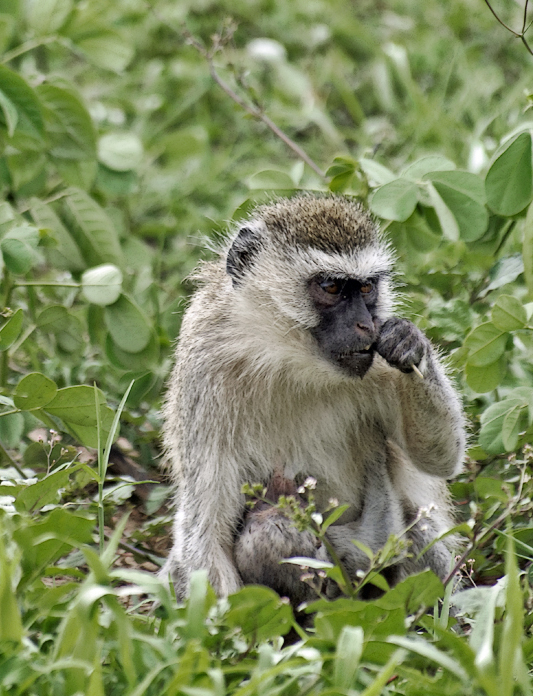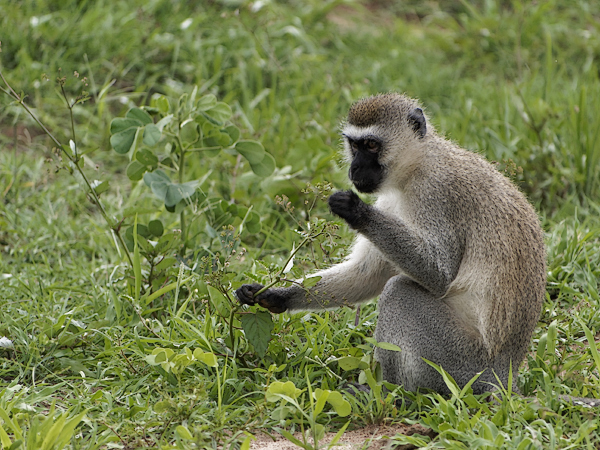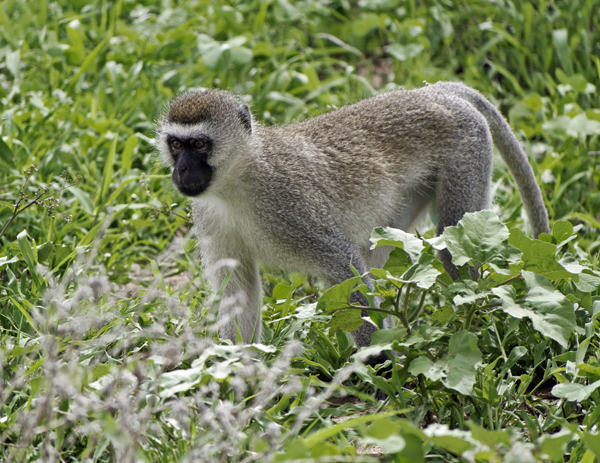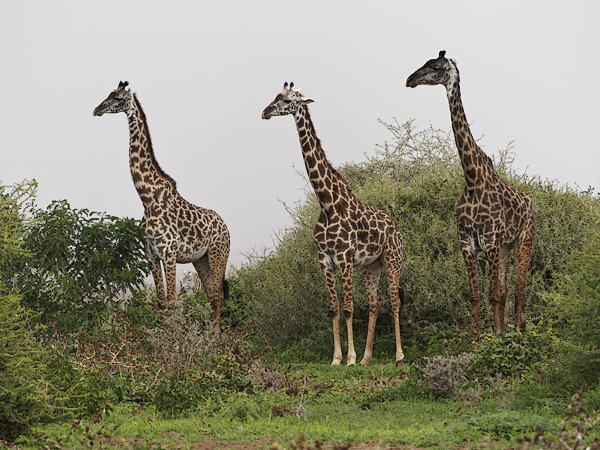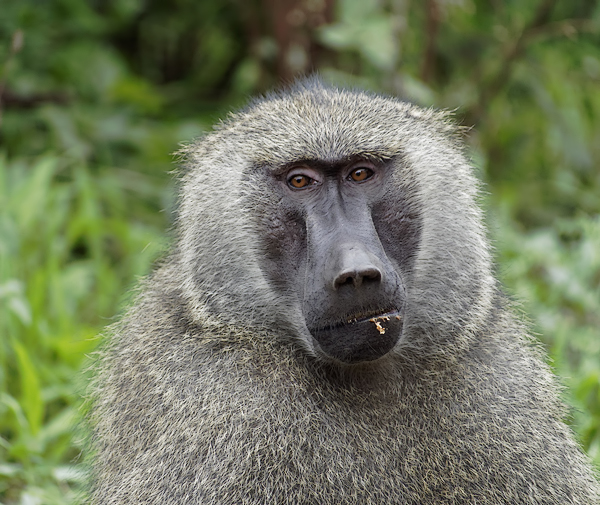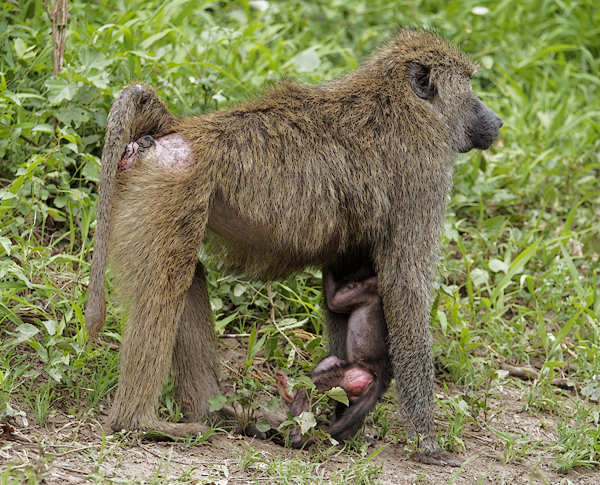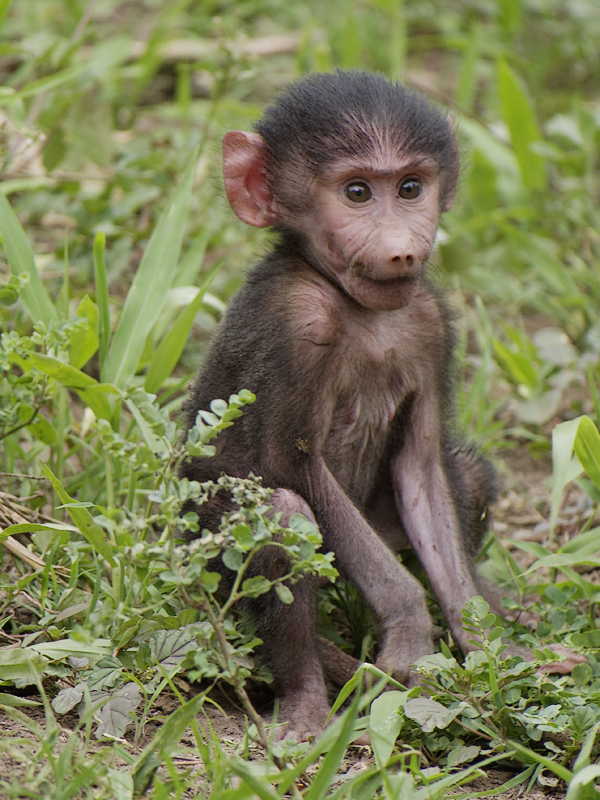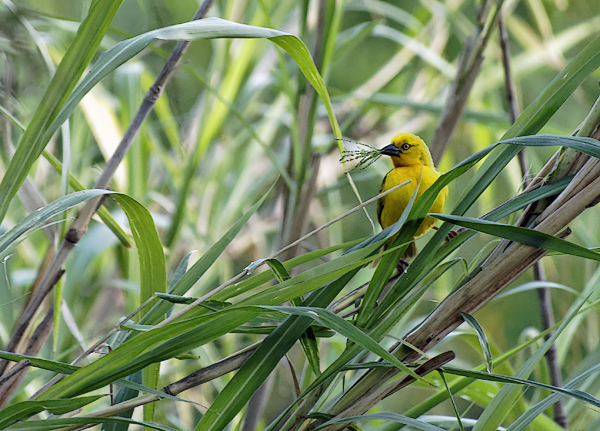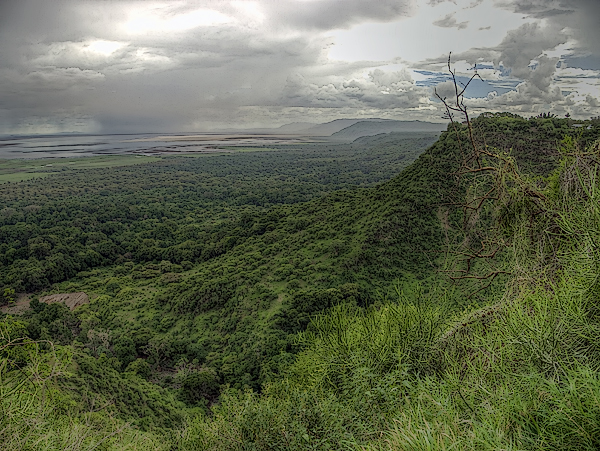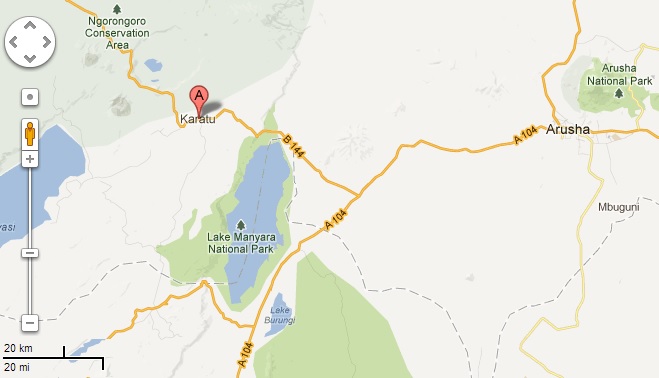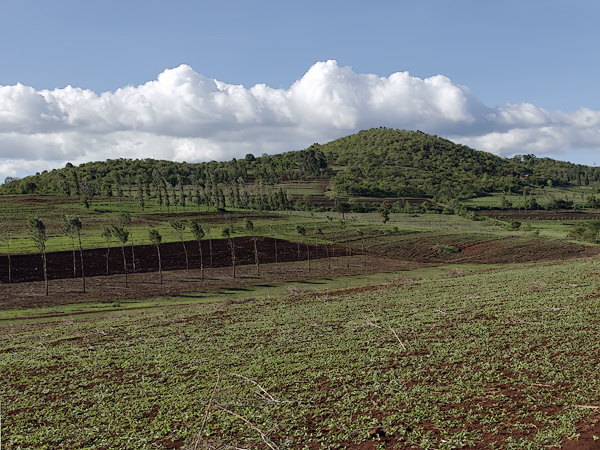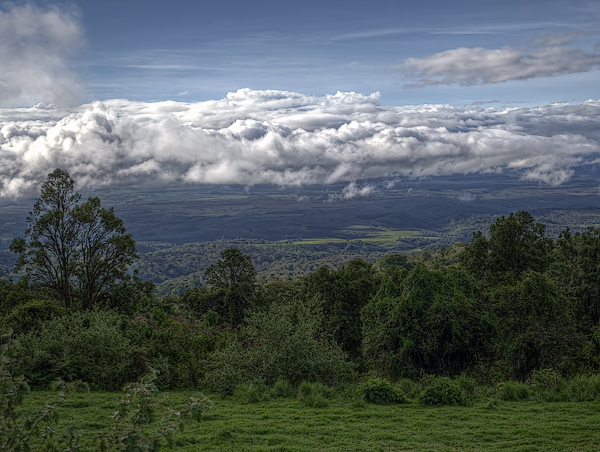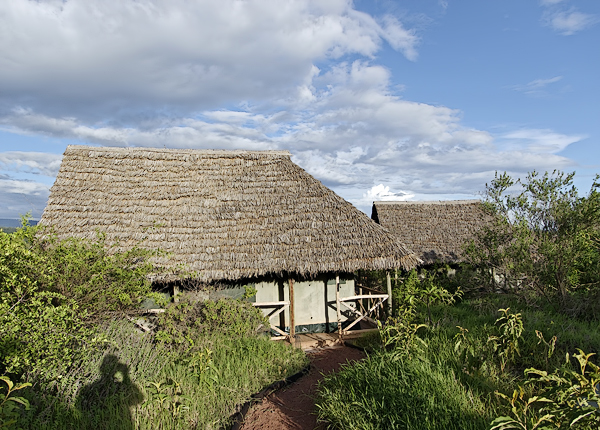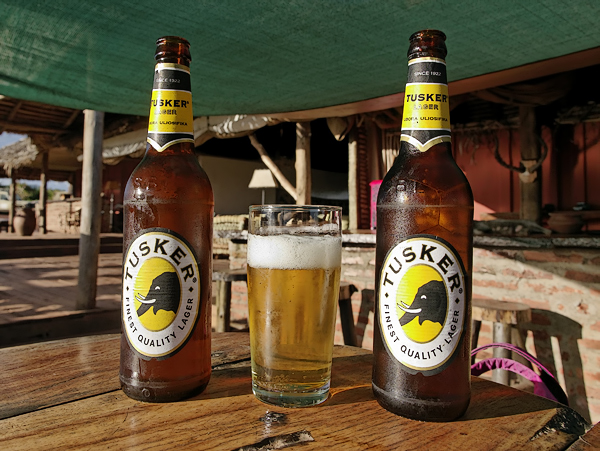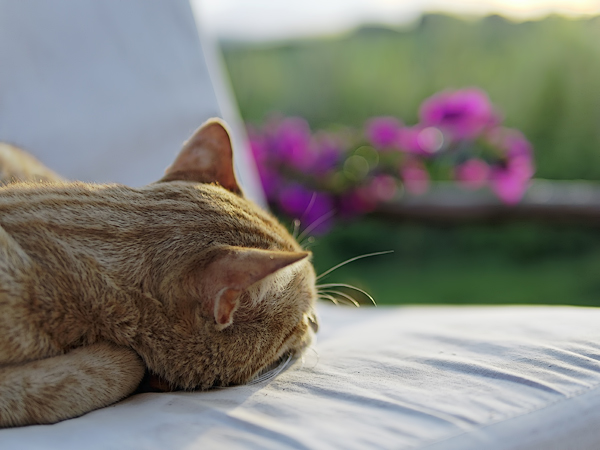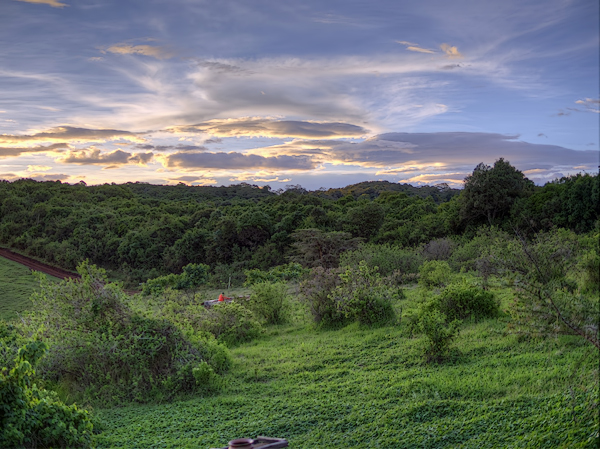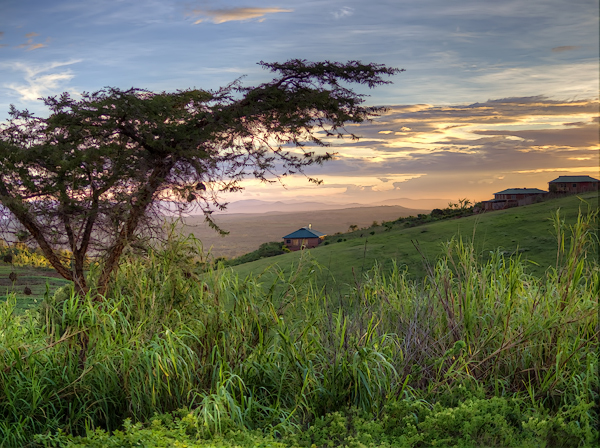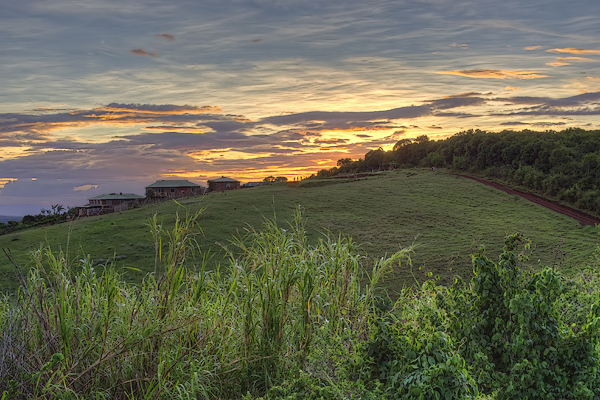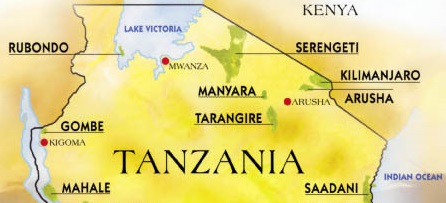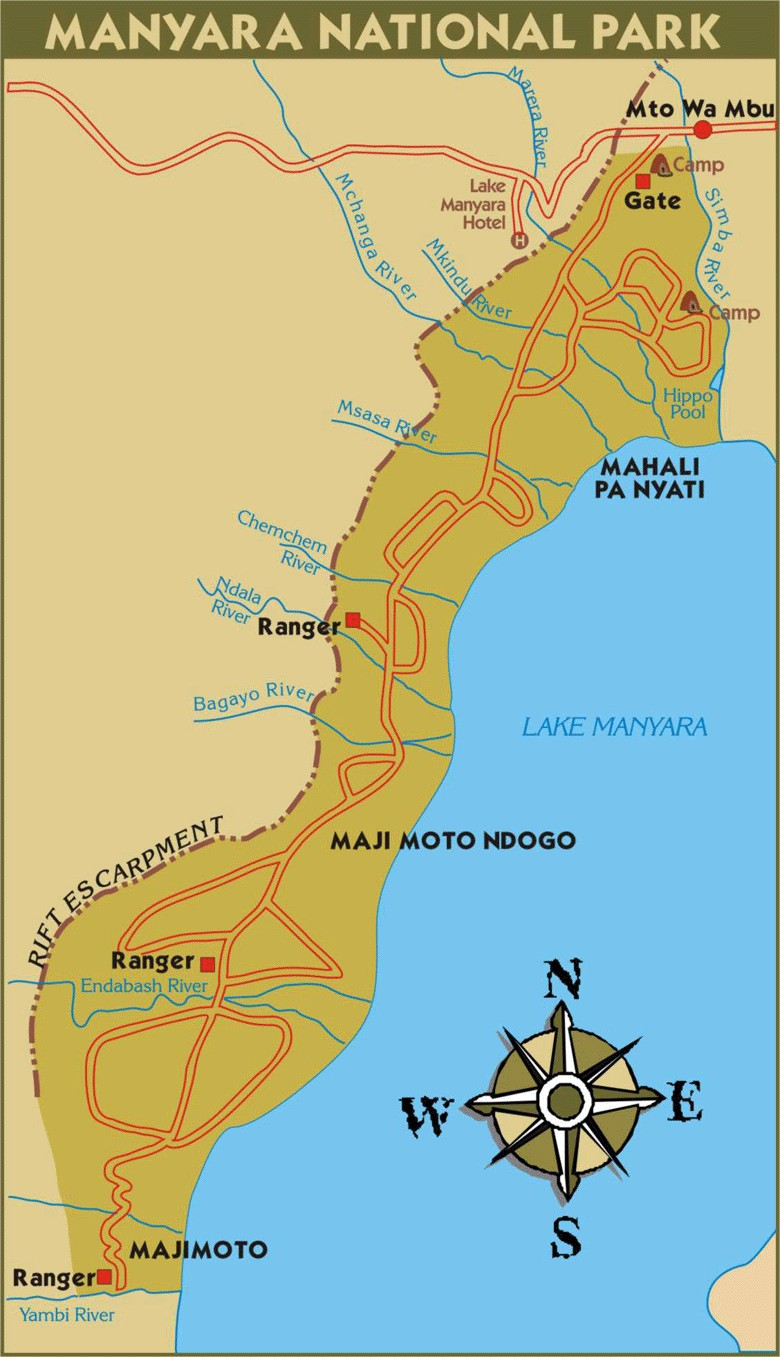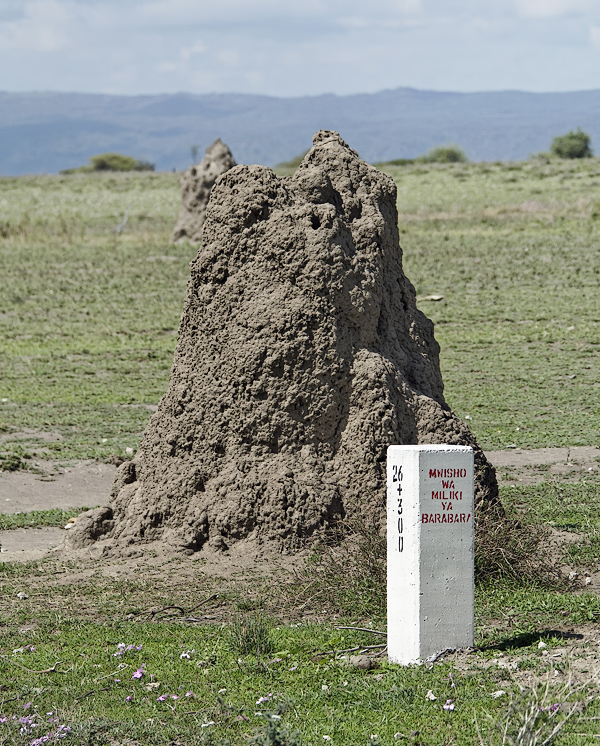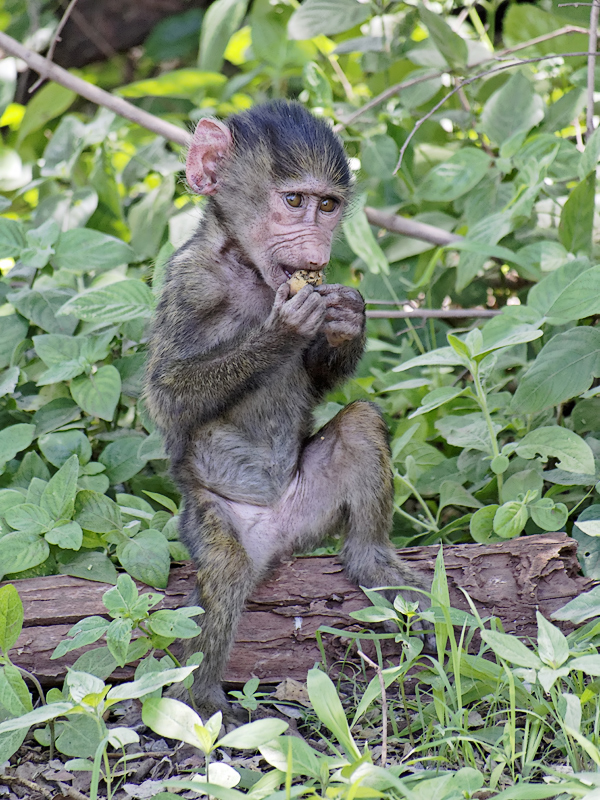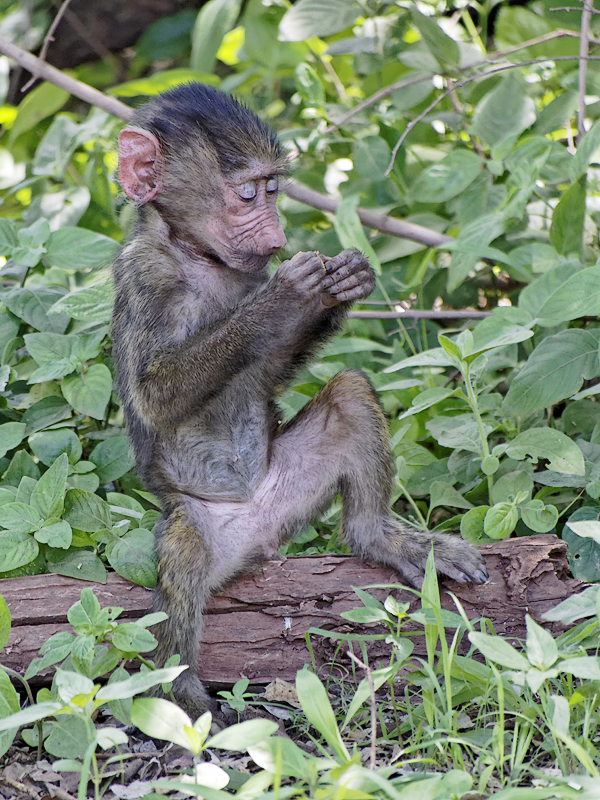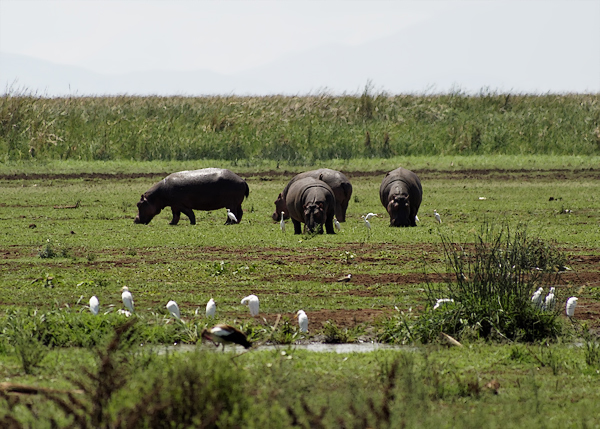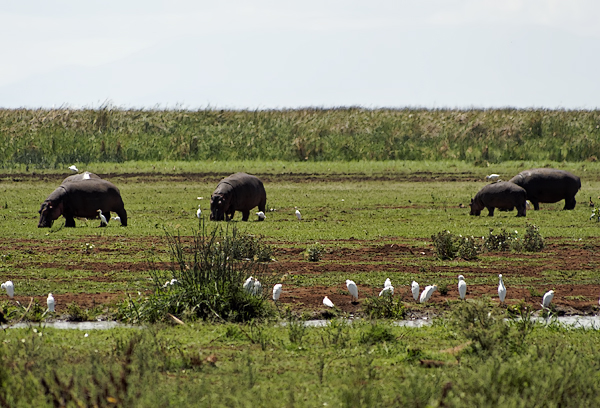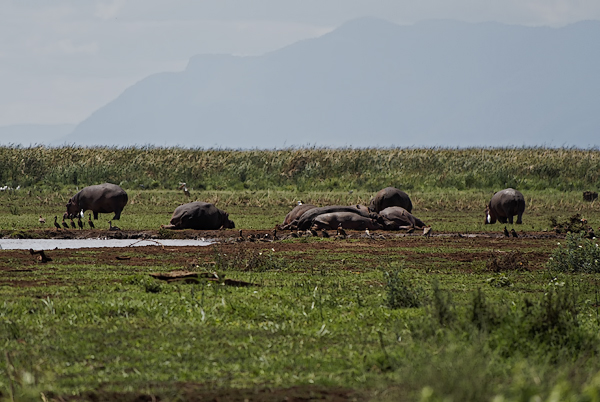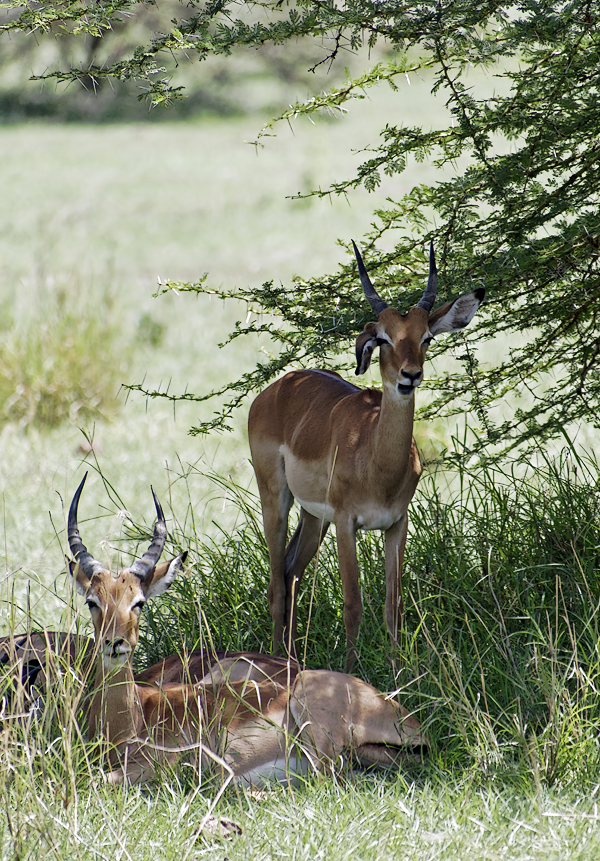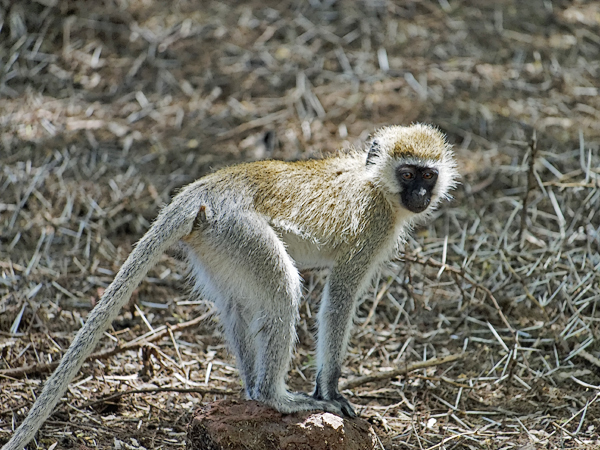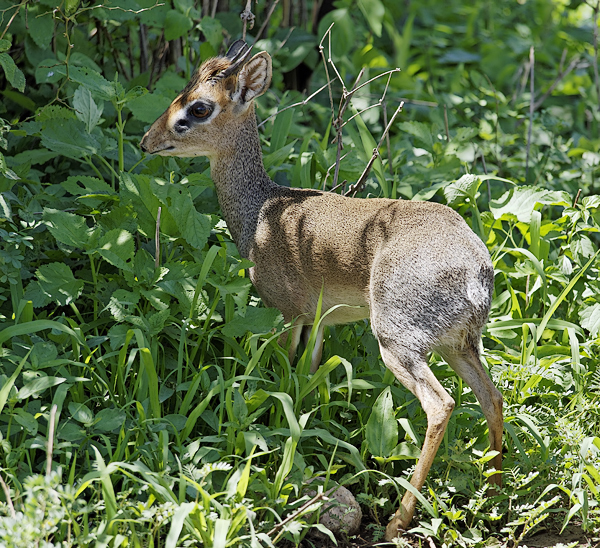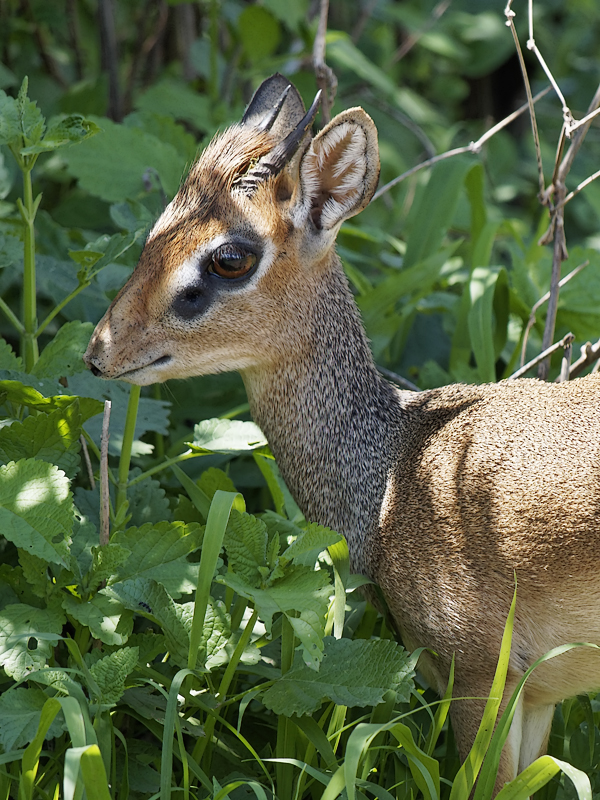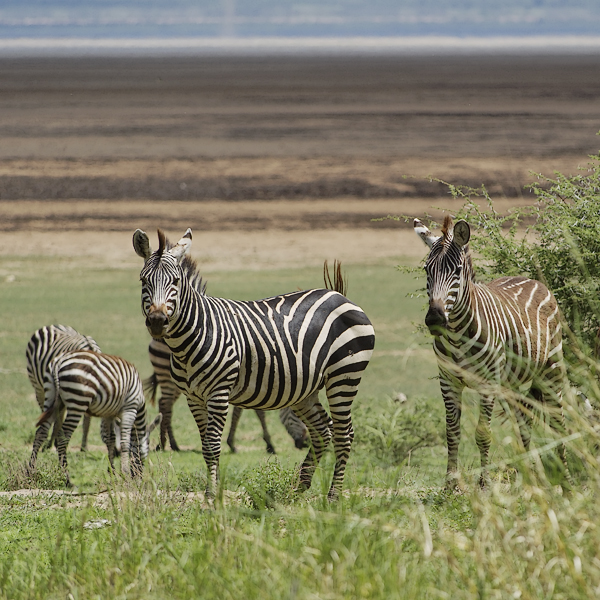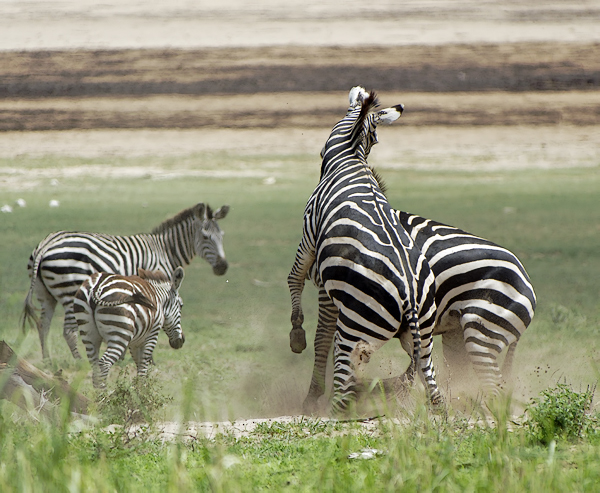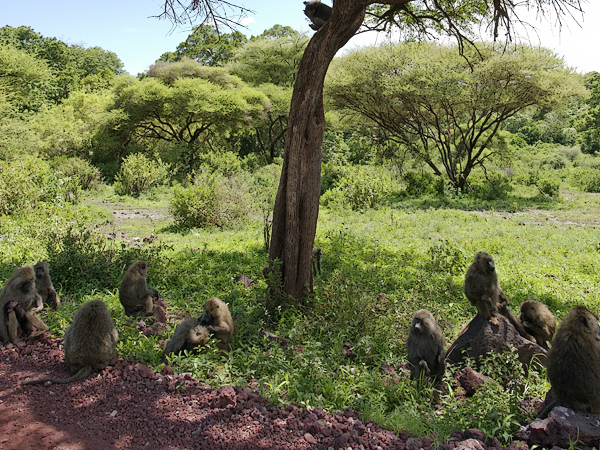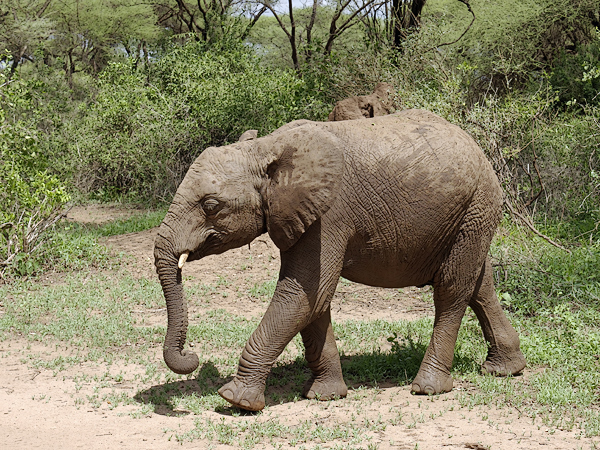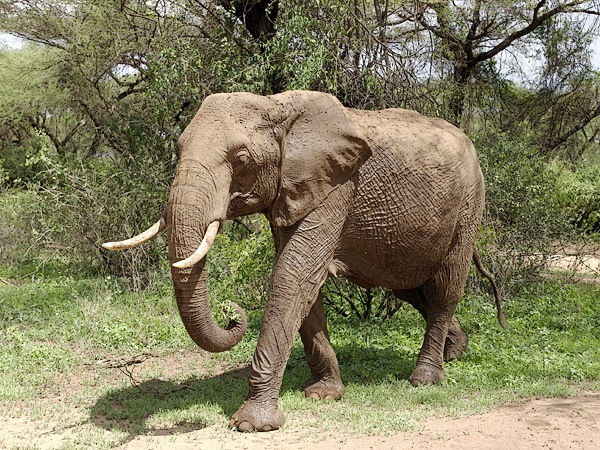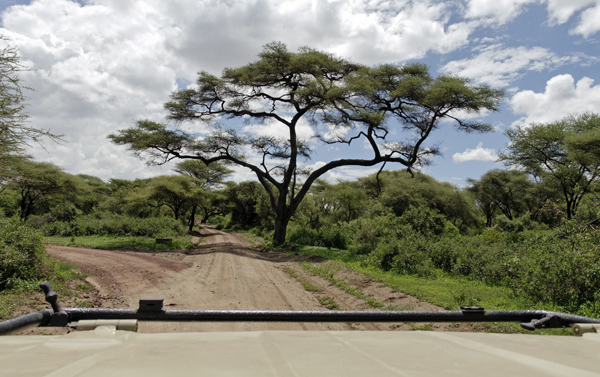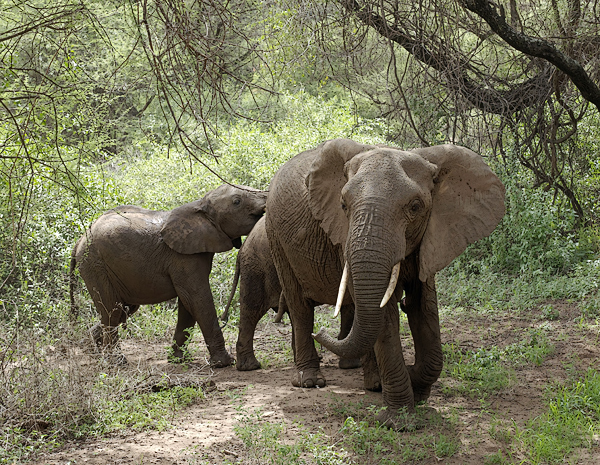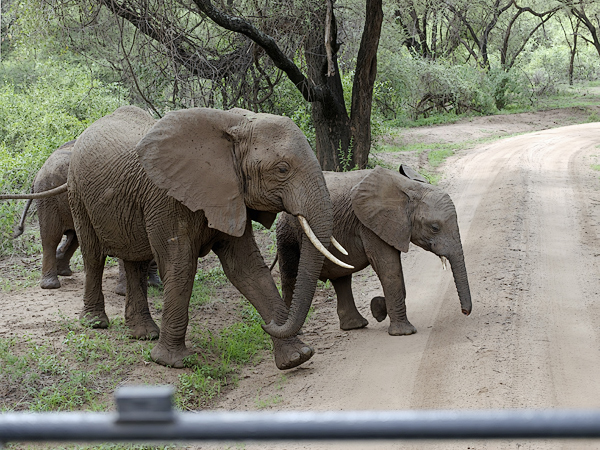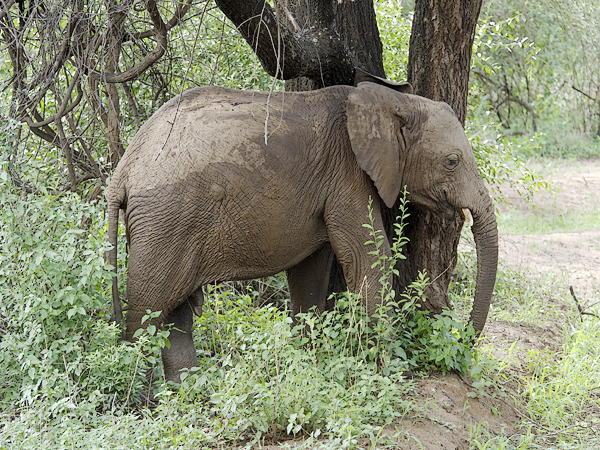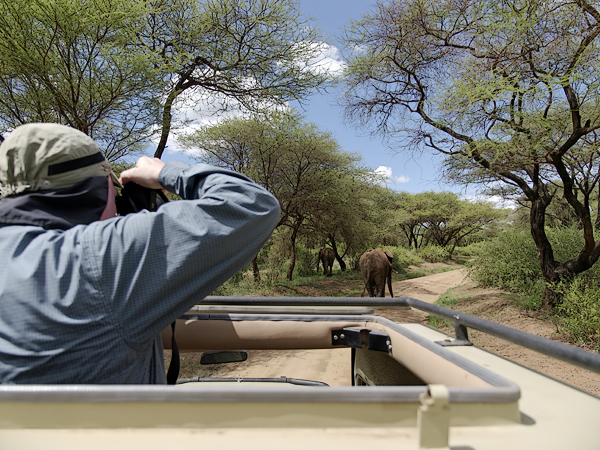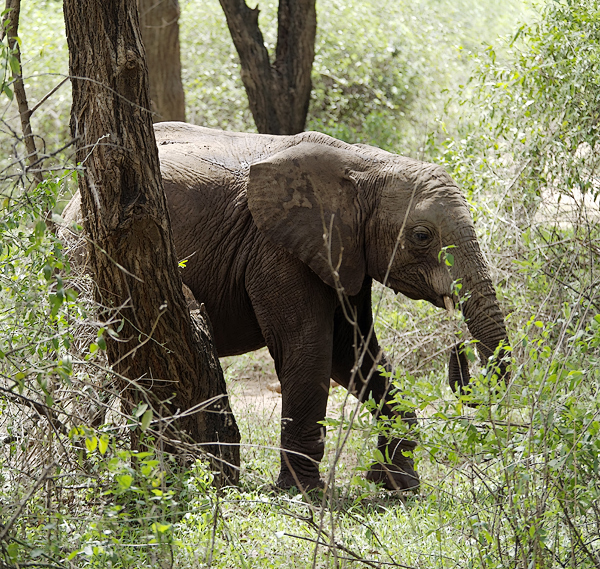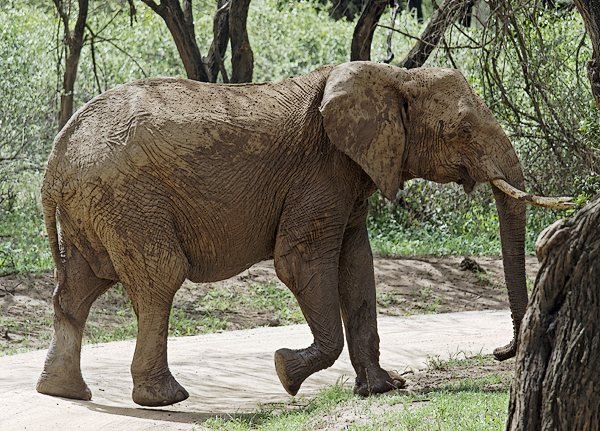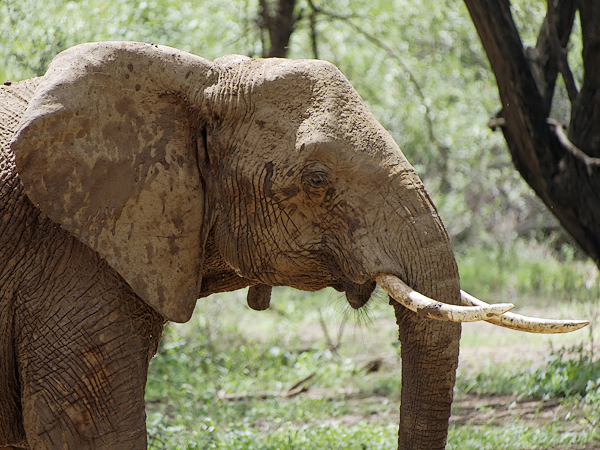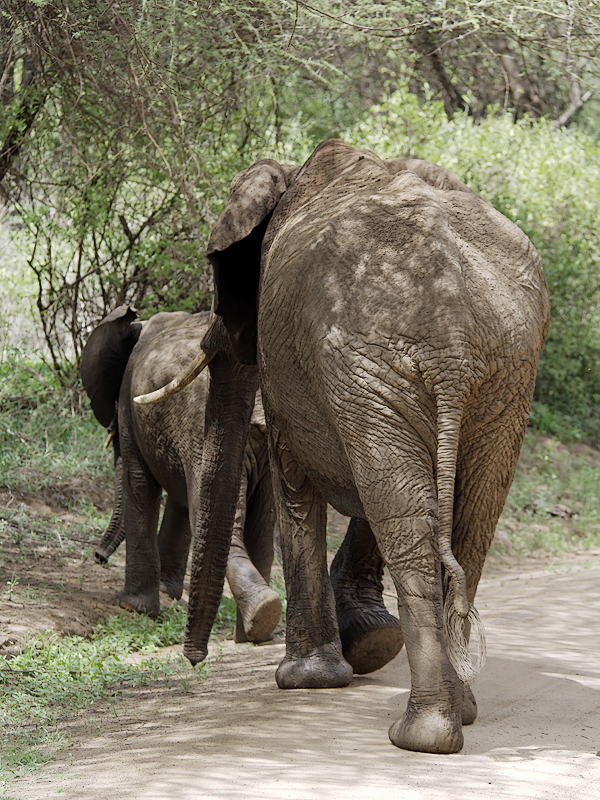A Schnitzelbahn History: the Tanzania honeymoon safari
 Thursday, May 1, 2014 at 0:19
Thursday, May 1, 2014 at 0:19 We've received some feedback from readers that we should add "index" pages for specific content.
An index page is better than the Categories ("Navigation" on the right side of this page) because
you don't have to scroll through blog entries you've already seen -- intead, just go to the entry you want.
So, here is a brief index of our blog entries about parks on the northern circuit in Tanzania (plus Mafia Island):
Arusha National Park (Day 1, Day 2)
- Arrival and overnight at Karama Lodge
- Morning in the Park: baboon babies, walk across the plain, a small waterfall, and lots of giraffes
- Afternoon in the Park: canoeing on an alkaline lake, flamingos, and black & white colobus monkeys
Lake Manyara National Park (Day 3)
- Morning in the Park: more baboon babies, impala, dik dik, zebra, and lots of elephants
- Afternoon in the Park: vervet monkeys with babies, baboons, golden weaver, plus the Rhotia Valley
Ngorongoro Crater the Ngorongoro Conservation Area (Day 4)
- Morning in the Crater: zebras, hyena, wildebeast, warthogs and babies, ostrich, black rhino, eland,
bush buck, Thompson's gazelle, birds (ibis, stork, and kori bustard), elephants, and lounging lions!
- Afternoon in the Crater: yellow-billed kites, weavers and pelicans, elephant, water buffalo,
ostriches in a mating dance, warthog babies, lions, and the Rhotia Valley Children's Home!
Serengeti National Park - Walking Safari (Day 5, Day 6, Day 7)
- Drive into Serengeti N.P.: saw lions mating (!), and an uncountable number of wildebeast in the herd
- Drive to the Walking Safari Camp: agama lizards, superb starlings, marabou stork, and our campsite
on the banks of the Orangi River in the central Serengeti (with recent hippo tracks near our tent!)
- Info about the designated "wilderness area" for walking safari: the camp, the surrounding landscape, etc.
- First day (morning walk): lots of animal tracks, water buffalo (one alive, one just a skull), and an impala
- First day (afternoon walk): an antlion, two jackals, and a mongoose family in an abandoned termite mound
- Second day (morning walk): a klipspringer, reedbuck, giraffes, topi... and a black-necked spitting cobra!
- Second day (afternoon walk): a short trek through the larger kopjes and rainy goodbye to the mobile camp
Serengeti National Parl - Game Drives (Day 8, Day 9, Day 10)
- Drive from walking camp to the game-drive camp: leopard tortise, herd (or pod) of hippos, impala, giraffes,
a silverbird and some weavers, a leopard (finally!), vultures, mongooses, water buffalo, and a lion near camp
- Info about our "special campsite": lodging options in Serengeti National Park, our tent camp in the shadows of one of the Moru Kopjes, baboons and giraffes at breakfast, light painting at night, and a landscape view with rainbows.
- First Day (morning game drive): hyrax, lion perched on a kopje, bearded woodpeckers, and lots of elephants
- First Day (afternoon game drive): a sensational view, with video, of a pride of lions gathering at dusk.
- Second Day (morning game drive): leopard in a tree, lion in a tree, many animals feeding (giraffe, vervet monkeys, warthog), many birds (secretary bird, pearl spotted owlet, gray hornbill, lilac breasted roller, lovebirds).
- Second Day (afternoon game drive): coming soon
Mafia Island (Chloe Island)
- First Day: coming soon
- Second Day: coming soon
- Third Day: coming soon
- Fourth Day: coming soon
- Fifth Day: coming soon
It was a once-in-a-lifetime adventure -- thanks to friends and family that gave wedding gifts to make it possible.




